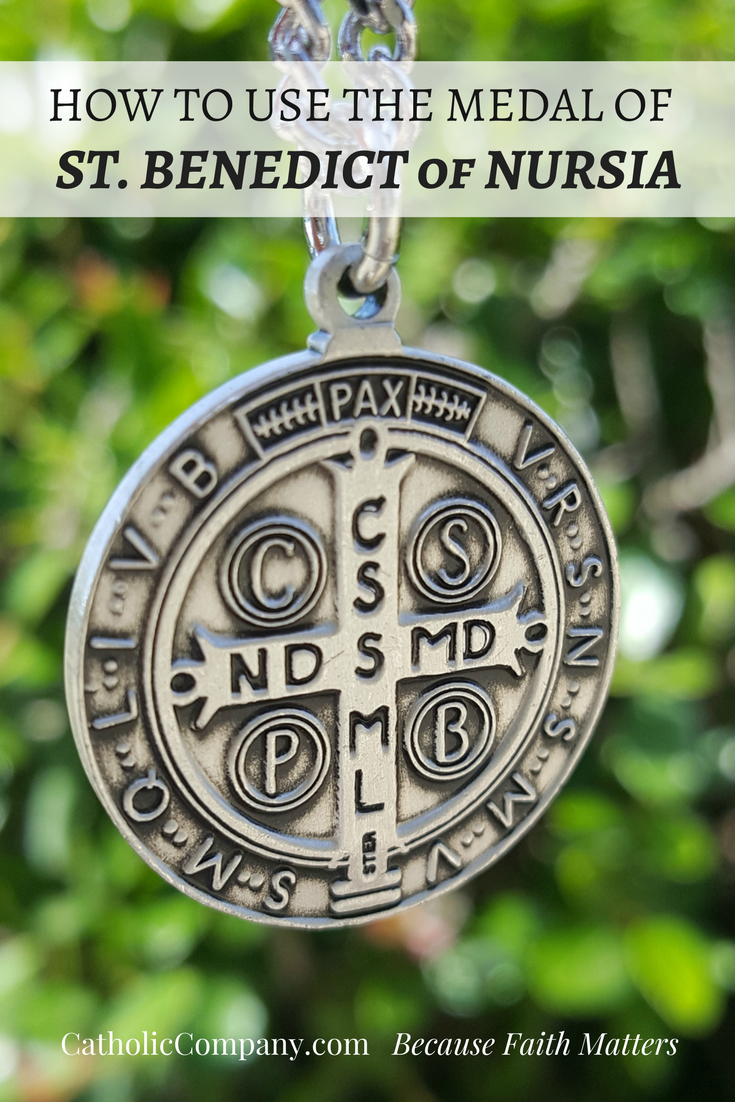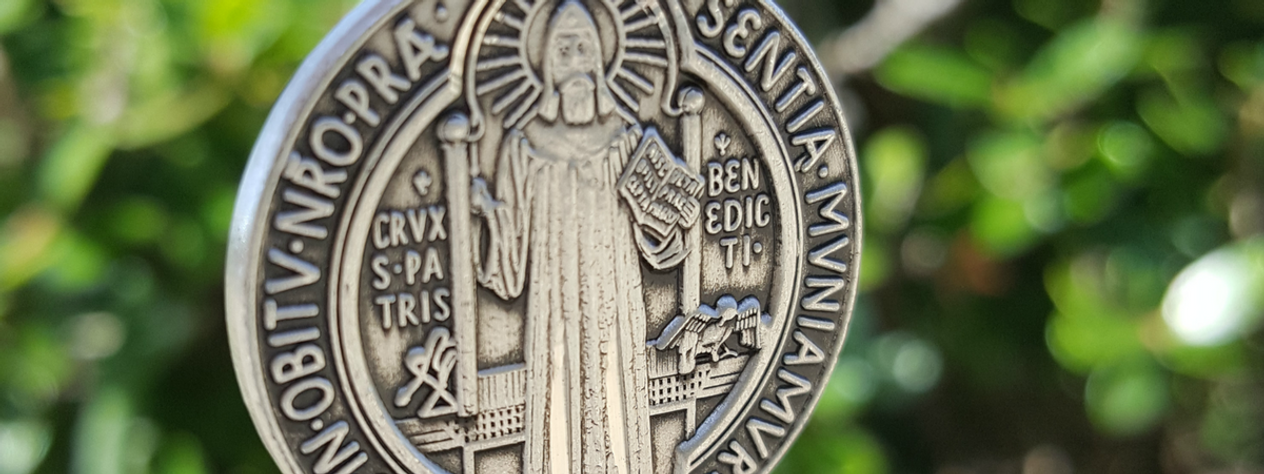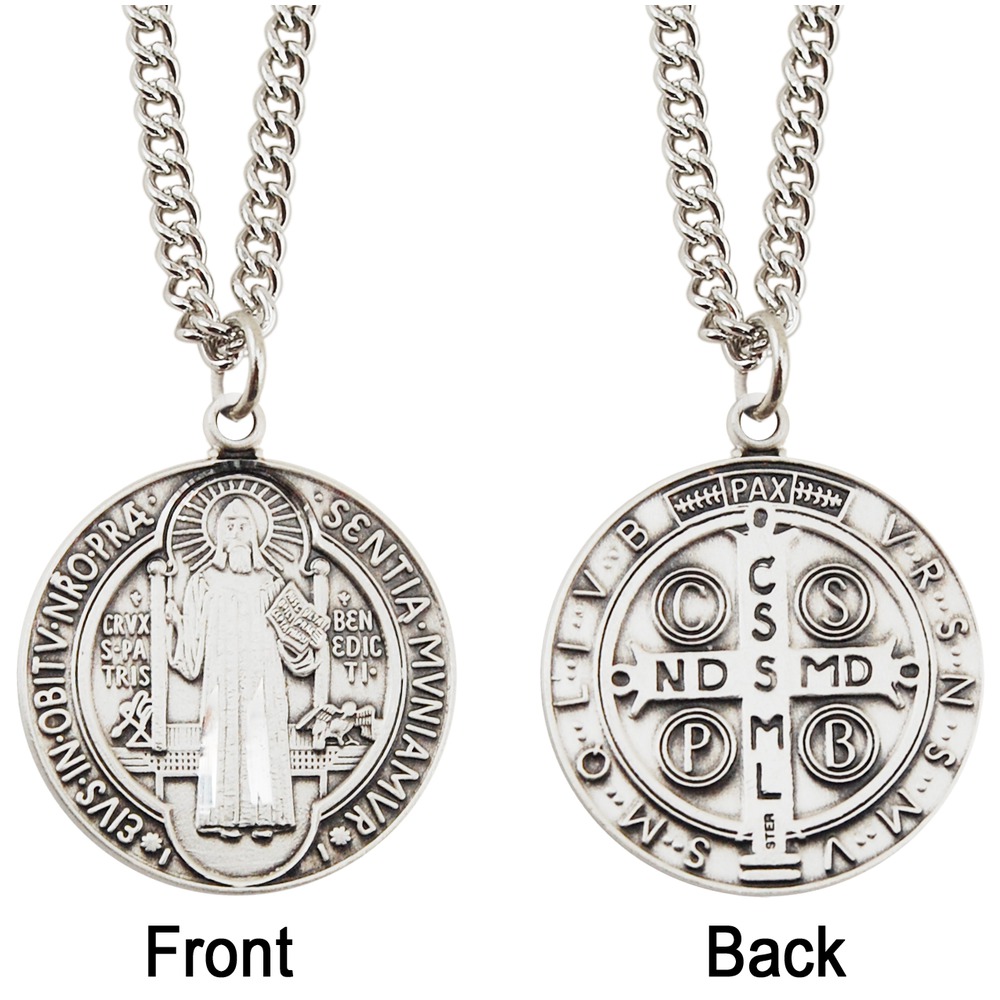How to Use the St. Benedict Medal
Jul 07, 2017 by Gretchen Filz
The popular St. Benedict medal is crafted after the spiritual legacy of St. Benedict of Nursia (d. 547 A.D.) the founder of the incomparable order of Benedictine monks, and, as a result, Western monasticism itself.
This holy abbot, who was destined to influence the spread of Christianity across the world for centuries, had many encounters with the Devil during his life. His triumph over Satan's wiles is the origin of the power that lies behind the medal named for him.
It is not only beautiful in design; there are many spiritual benefits associated with the pious use of the medal. Because St. Benedict is the patron saint against many forms of diabolical influence—including witchcraft, poison, disease, and temptation—his medal has the power to protect those who use it faithfully from various evils and temptations. It is also used for obtaining the conversion of sinners, help for women during childbirth, the strengthening of faith, perseverance in the virtue of purity, protection during storms, the curing of diseases, and the grace of a happy death. There are also multiple indulgences associated with the St. Benedict medal that can be obtained on many liturgical feasts throughout the year, which you can read more about here.
Each of the letters engraved on the front and back of the medal stand for Latin prayers of exorcism. Read The Exorcism Formula & Blessing Ritual of the St. Benedict Medal to learn more about its powerful symbolism, as well as its special rite of blessing from the Roman Ritual.
Needless to say, because of its prayers and indulgences, this is a very efficacious medal for spiritual protection, and a reminder of the spiritual battle taking place between heaven and hell for the eternal possession of our souls.
However, it is important to not be superstitious about the St. Benedict medal, or any other Catholic medal. They are sacramentals, which are "sacred signs instituted by the Church to prepare us to receive the fruit of the sacraments and to sanctify different circumstances of our lives" (CCC, 1677). They do not have power in and of themselves, but rather, through the merit and prayers of the Church and her saints. The use of sacramentals is never a replacement for living a holy life and remaining in a state of grace; rather, they are aids to help us persevere in our Catholic faith.
The Benedictine monks of Subiaco Abbey in Subiaco, Arkansas, explain the uses and importance of the Medal of St. Benedict:
"There is no special way prescribed for carrying or wearing the Medal of St. Benedict. It can be worn on a chain around the neck, kept in one’s pocket or purse, or placed in one’s car or home. The medal is often put into the foundations of houses and building, on the walls of barns and sheds, or in one’s place of business.
The purpose of the medal in any of the above ways is to call down God’s blessing and protection upon us, wherever we are, and upon our homes and possessions, especially through the intercession of St. Benedict. By the conscious and devout use of the medal, it becomes, as it were, a silent prayer and reminder to us of our dignity as followers of Christ.
The medal is a prayer of exorcism against Satan, a prayer for strength in time of temptation, a prayer for peace among ourselves and among the nations of the world, a prayer that the Cross of Christ be our light and guide, a prayer of firm rejection of all that is evil, a prayer of petition that we may with Christian courage “walk in God’s ways, with the Gospel as our guide,” as St. Benedict urges us.
The lessons found there can be pondered over to bring true peace of mind and heart into our lives as we struggle to overcome the weaknesses of our human nature and realize that our human condition is not perfect, but that with the help of God and the intercession of the saints our condition can become better.
The Medal of St. Benedict can serve as a constant reminder of the need for us to take up our cross daily and “follow the true King, Christ our Lord,” and thus learn “to share in his heavenly kingdom,” as St. Benedict urges us in the Prologue of his Rule."
Read more about the St. Benedict Medal from the Benedictine monks of Subiaco Abbey here. You can find many sacramentals featuring the St. Benedict medal, including rosaries and crucifixes, here.

This article has been updated and was originally published in July 2015. © The Catholic Company






